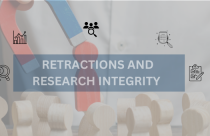10 Unspoken Lab Rules of Working in Shared Research Laboratories

Waiting for your turn to use the fume hood in the lab? Well, you aren’t alone to be doing so! Not all of us are privileged to be having a set of laboratory equipment to ourselves. Thus, abiding by lab rules is imperative to work in shared research laboratories. The possessiveness you feel when someone else is using the same stir plate, the GC, or an HPLC, is quite normal for everyone working in the lab.
Why are Lab Rules Important?
Though unwritten, it is important for every researcher working in the lab to follow the rules to maintain the decorum in shared laboratories. It helps in developing synergy amongst co-workers in the lab even when researchers all over the world are working in labs during the pandemic. Furthermore, it eliminates the chances of disrupted working manners and lets everyone complete their experiments as planned.
10 Unspoken Rules to Work in Shared Labs
1. Don’t Touch What’s Not Yours!
This is not just a lab rule but a life rule too! It’s a primary and most important rule that you should never use someone else’s enzymes, primers, liquid media or any other solutions, particularly those that are sensitive to contamination. If at all you want to, you must ask for permission to use them! And even after receiving the permission, always take how much you need into a separate container in a sterile hood to avoid the risk of contamination. This rule not only applies to chemicals or media, but also to pipettes or other equipment.
2. Do for Others as You’d Want Others to Do for You!
One of the best examples to explain this is; while you are making up stock solutions, it’s good to ask others in the lab if they would like you to make some for them. In general, it is a good practice to ask everyone in the lab if they’d want similar equipment (such as weighing scales, glassware, etc.) or chemicals as you. Someday, your colleagues will also help you in similar ways.
3. Be Responsible of Your Mistakes
Did you accidentally spill the stock solution? Or did you unknowingly contaminate the media? Don’t worry! We all make mistakes. Committing mistakes is not a problem but not owing up to them and letting others use the contaminated solution or media is. Hence, it is important to admit that you’ve made a mistake so that proper measures are taken to avoid gaining inconclusive results in experiments performed by you or others. The repercussions of hiding a small mistake could be huge, especially if you ruined someone else’s work or even risked other people’s safety. Learn to own up to your mistakes to avoid getting in trouble, rather your colleagues will appreciate your honesty. Having said that, do not always make same mistakes, but make a conscious effort to learn from them!
4. Do Not Be a Hoarder
What are you even going to do with 3 dozens of petri dishes that you’ve kept at the back of your locker? Try to maintain a sign-up sheet for coveted lab equipment if there isn’t one already. A sign-up sheet can make sure everyone gets the lab resource they need when they need it, and not keep someone from conducting their experiments because someone else has just stashed things and isn’t using them.
5. Keep a Check on Inventories
Well, you just picked up the penultimate set of micropipettes from the supply closet; let the lab manager know that there’s just one set left. This helps them in restocking the supply closet in time so that other researchers do not have to wait until a new set comes in.
6. A Clean Workspace Leads to a Clean Mind space
No dirty dishware in the sink! Don’t leave cupboards/fridges/bottles/cell culture room doors/freezers open! Don’t leave the liquid nitrogen container improperly sealed! It is important to keep your workstation clean and tidy. A tower of trash is a mess waiting to happen. If the garbage needs to be taken out, take it out. A moment of forgetfulness or laziness could potentially ruin someone else’s work.
7. Understand the Hierarchy
As an early career researcher, you’ll be asking everyone for help. You may shy away at times and come up as annoying for some. And that’s fine, everyone else has been there. What’s important here is to understand the hierarchy! If you have a problem, you should reach out to your assigned supervisor of Principal Investigator.
8. Choose the Right Shoes
While the flip-flops are comfortable, they definitely haven’t got you covered in the lab! Ensure that you wear closed-toe shoes with well-gripping soles for lab work. It is rather recommended that you have a different pair of indoor shoes to wear in the lab to prevent tracking in snow, dirt, and mud.
9. Put a Label on Everything
“I didn’t know it was yours!” This is one of the most common phrases we hear when someone mistakenly uses the equipment that you had kept ready. To avoid such a situation, add names, dates, and specifics (such as whether the material requires refrigeration) on substances and equipment. This also helps you in keeping track of the progress of your time-sensitive experiments. Use color codes to mark their urgencies or differentiate one from another.
10. Follow the Protocol
Generally, each lab has a setup and teardown protocols. If your lab doesn’t volunteer to draft one. Setting up protocols for the lab with respect to using, cleaning, storing, and maintaining lab equipment, documenting experiments, can help everyone to stay on the same page.
These 10 lab rules can be adapted and refined to the circumstances of each research lab and can improve the working conditions of shared laboratories. So, the next time you’re in lab, ask yourself: Are you following these 10 tips, or are you falling short? What are some other unspoken lab rules that you follow that aren’t mentioned here? Let us know in the comments section below! You can also visit our Q&A forum for frequently asked questions related to different aspects of research writing and publishing answered by our team that comprises subject-matter experts, eminent researchers, and publication experts.









